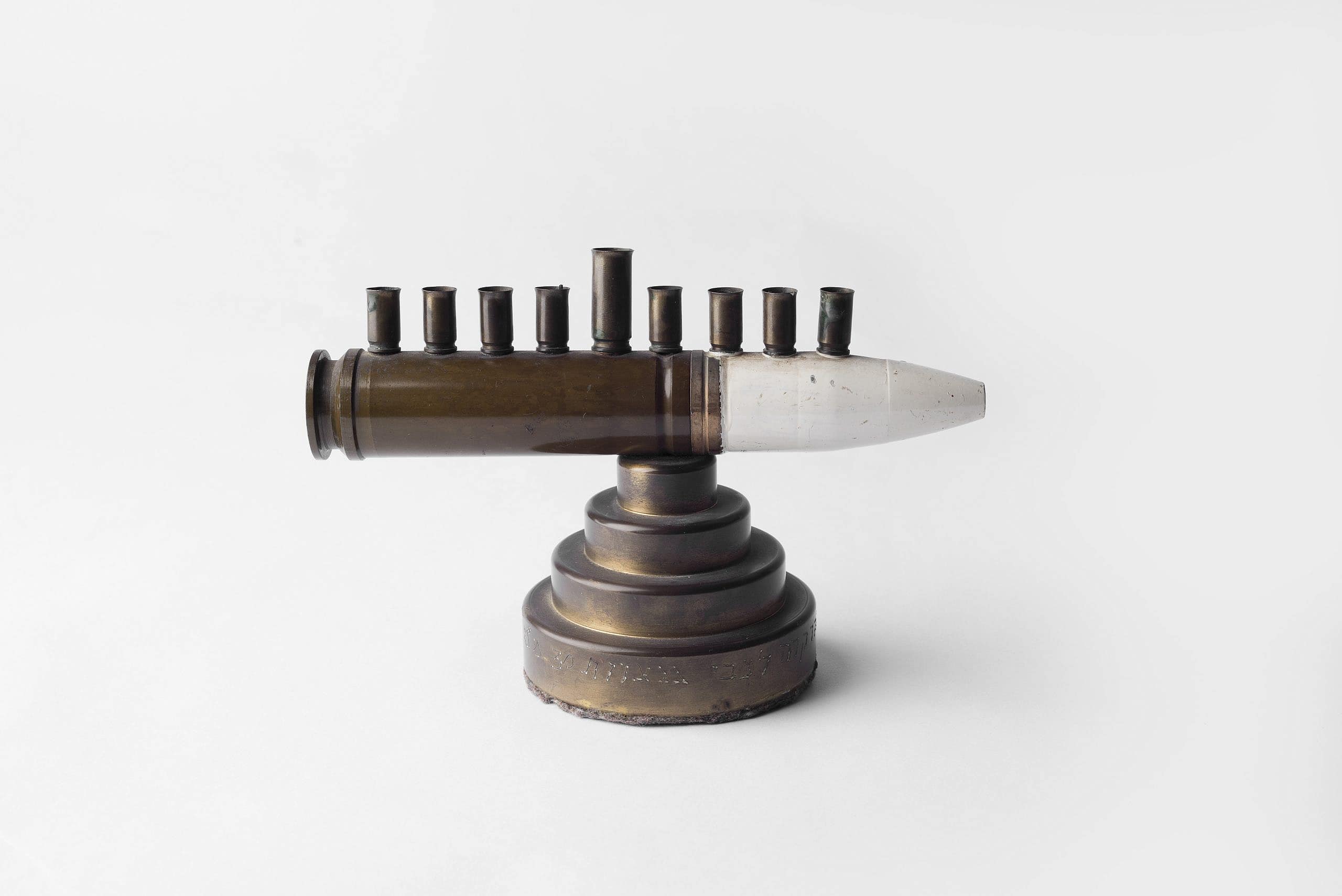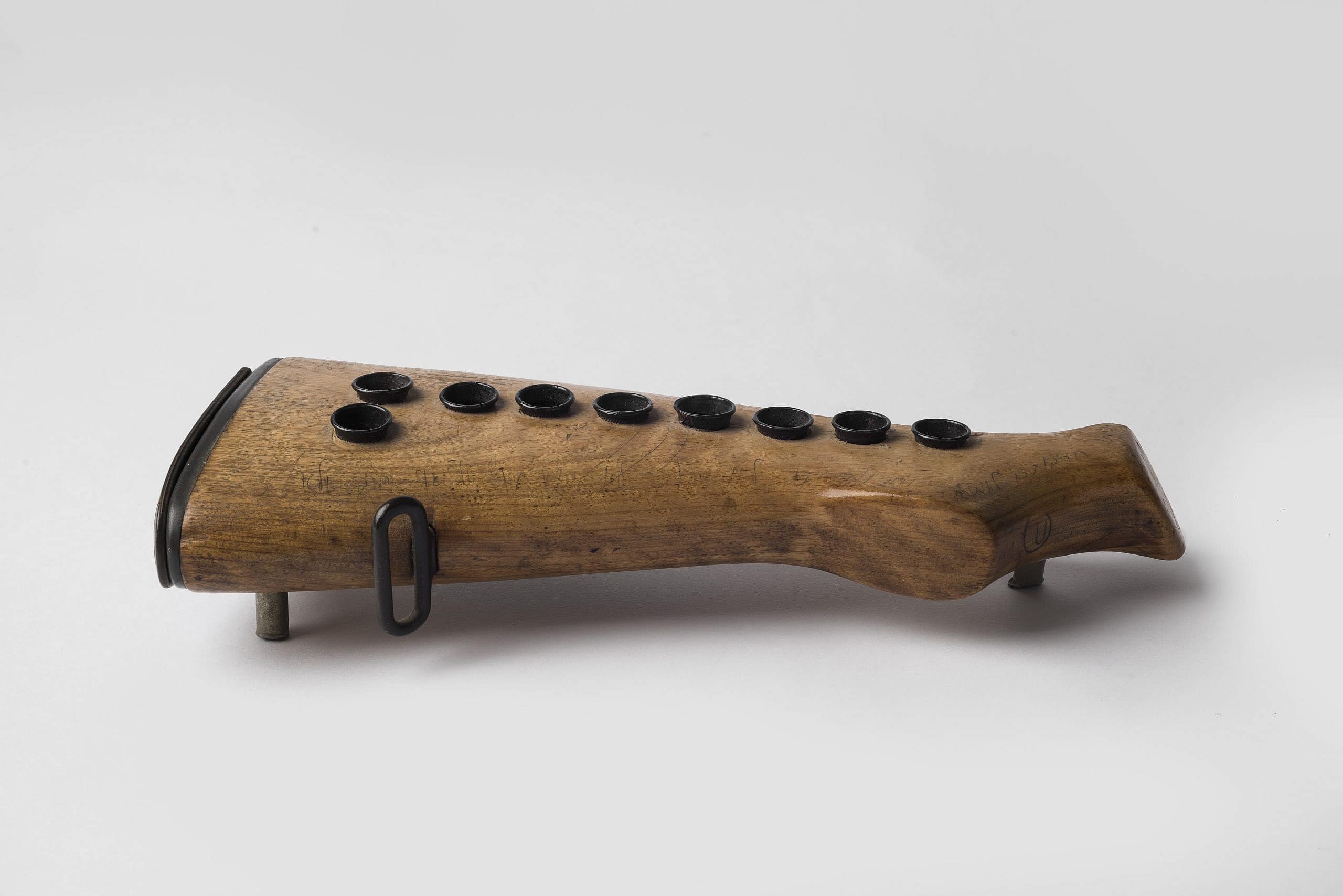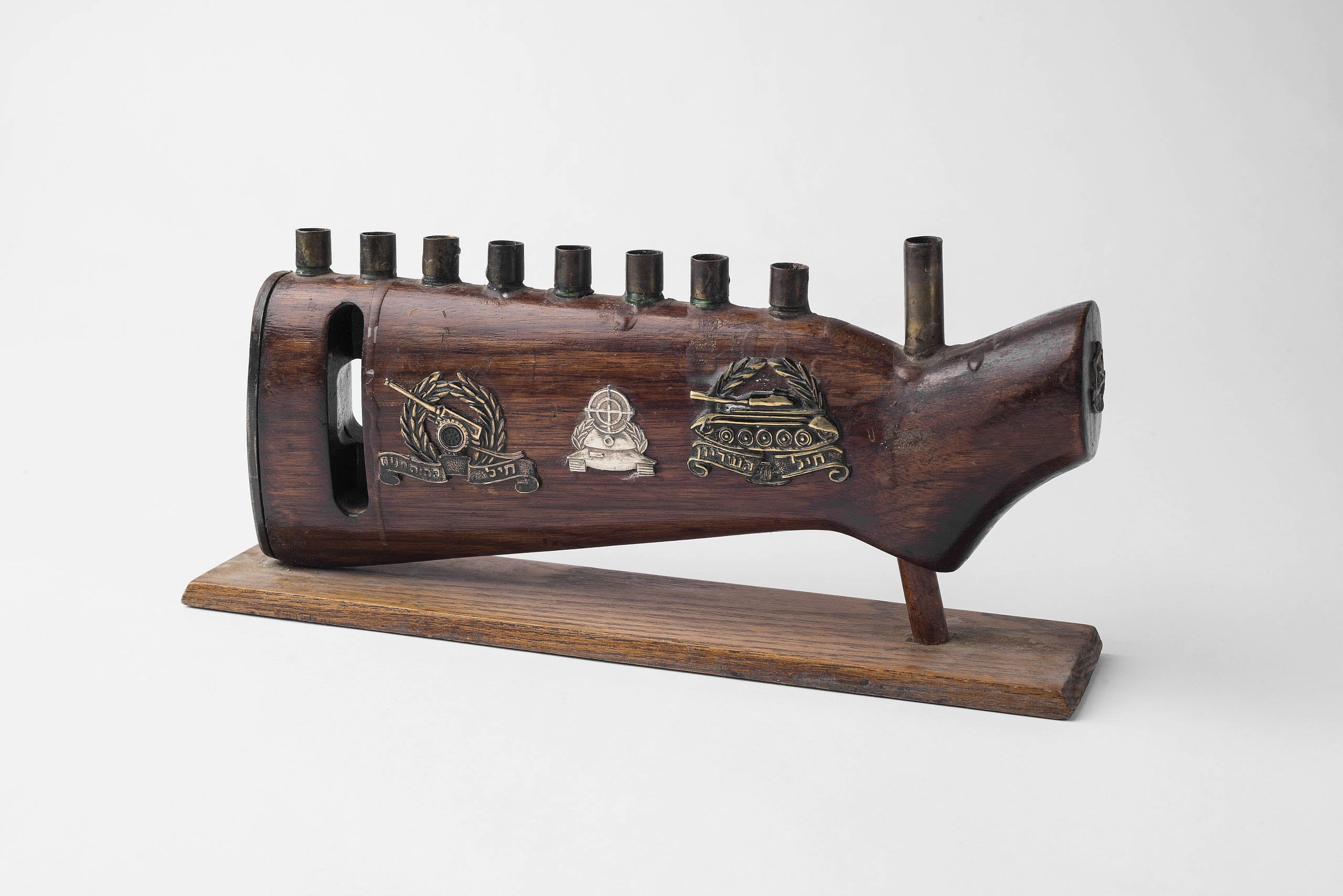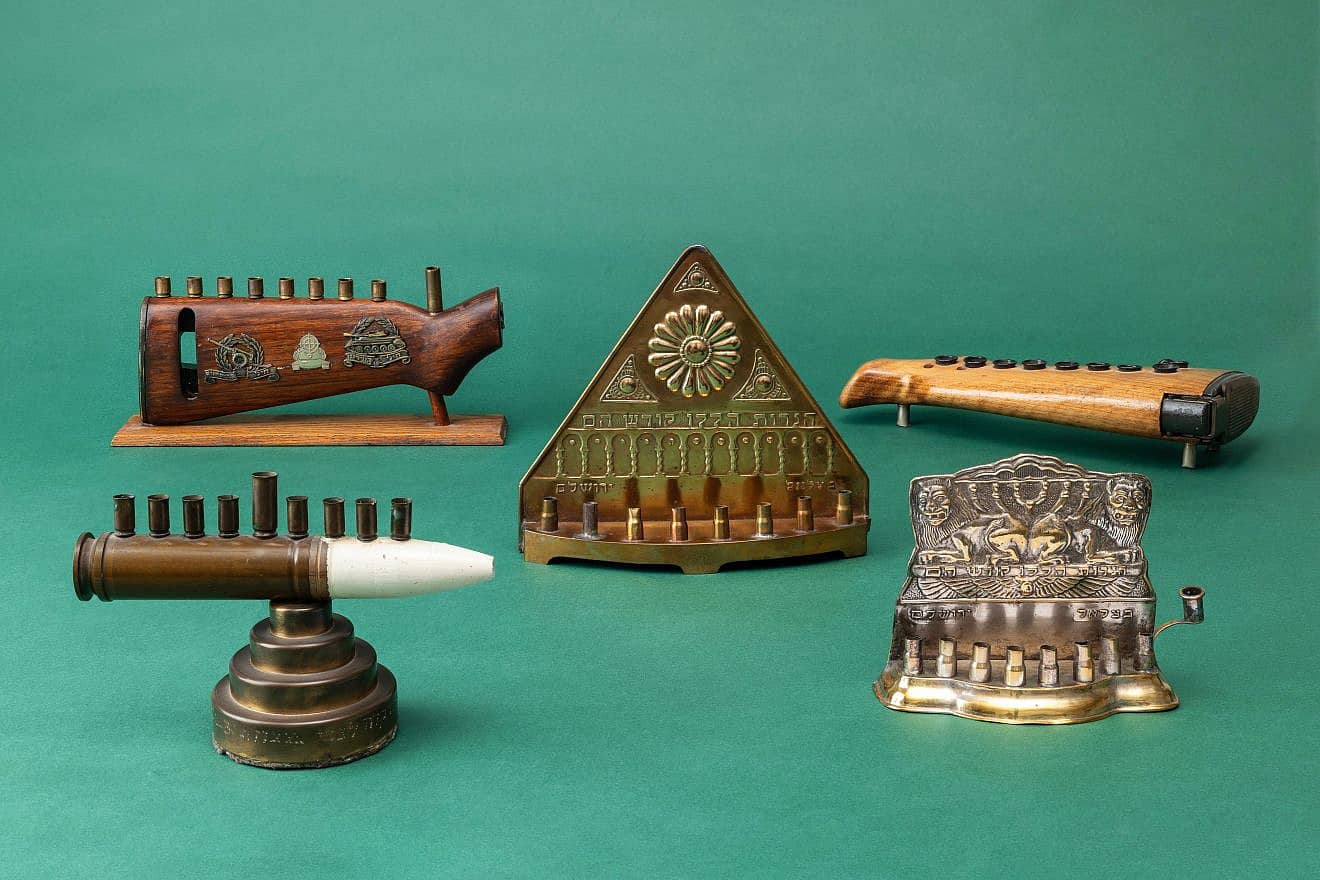The Israel Museum Jerusalem is home to one of the world’s largest collections of Chanukah lamps, with some 1,000 items from across the globe—from the Middle Ages to the present day. A ubiquitous Judaica object, many are adorned with diverse symbols and figures—and come in different styles, forms and materials—each representing the culture of the community and region where it was made.
A singular group in the collection was fashioned from repurposed weapon parts over the past century. They include lamps made from rifle parts, combinations of shells and pods, or shells as candleholders. One lamp—made from a rifle stock of an M1 carbine, which was in use mainly from World War II to the Vietnam War, and later, provided by the United States—was used by the Civil Guard volunteers in Israel. The lamp bears the symbols of the armored corps and artillery corps. Another bears a personal inscription: “In appreciation to Zvi from the 30mm team,” and was probably forged in the metal workshop of a military base.
The incorporation of ammunition and weapon parts into Chanukah lamps resonates with the admiration for the army and its combat soldiers during the initial decades of modern-day Israel. But the practice dates back to World War I and in works created at the Bezalel School, which was associated with the Zionist movement from its early days. The use of rifle bullet casings was also a practical consideration; they could be collected following battles and adapted easily.
The combination of weapon parts used in battle with Zionist message inscriptions or dedications on such lamps may express a more profound connection, tying the miracle of Chanukah—the triumphant menorah-lighting in the Holy Temple—with Israel’s miracle of resilience and nationhood. Just as the Maccabees overcame oppression, the establishment of Israel in 1948 marked a historic victory, symbolizing the enduring strength of a people who rose from centuries of adversity.
In the series of miracles celebrated on Chanukah, the Jewish freedom fighters (Maccabees) entered the Temple Mount and discovered that the place had been violated, its valuables sacked and its sacred items contaminated. Eager to light the menorah, they thrust spears into the ground, forming an ad hoc candelabra. In time, that was replaced by a silver menorah, and eventually, a golden one, according to Chabad.org.
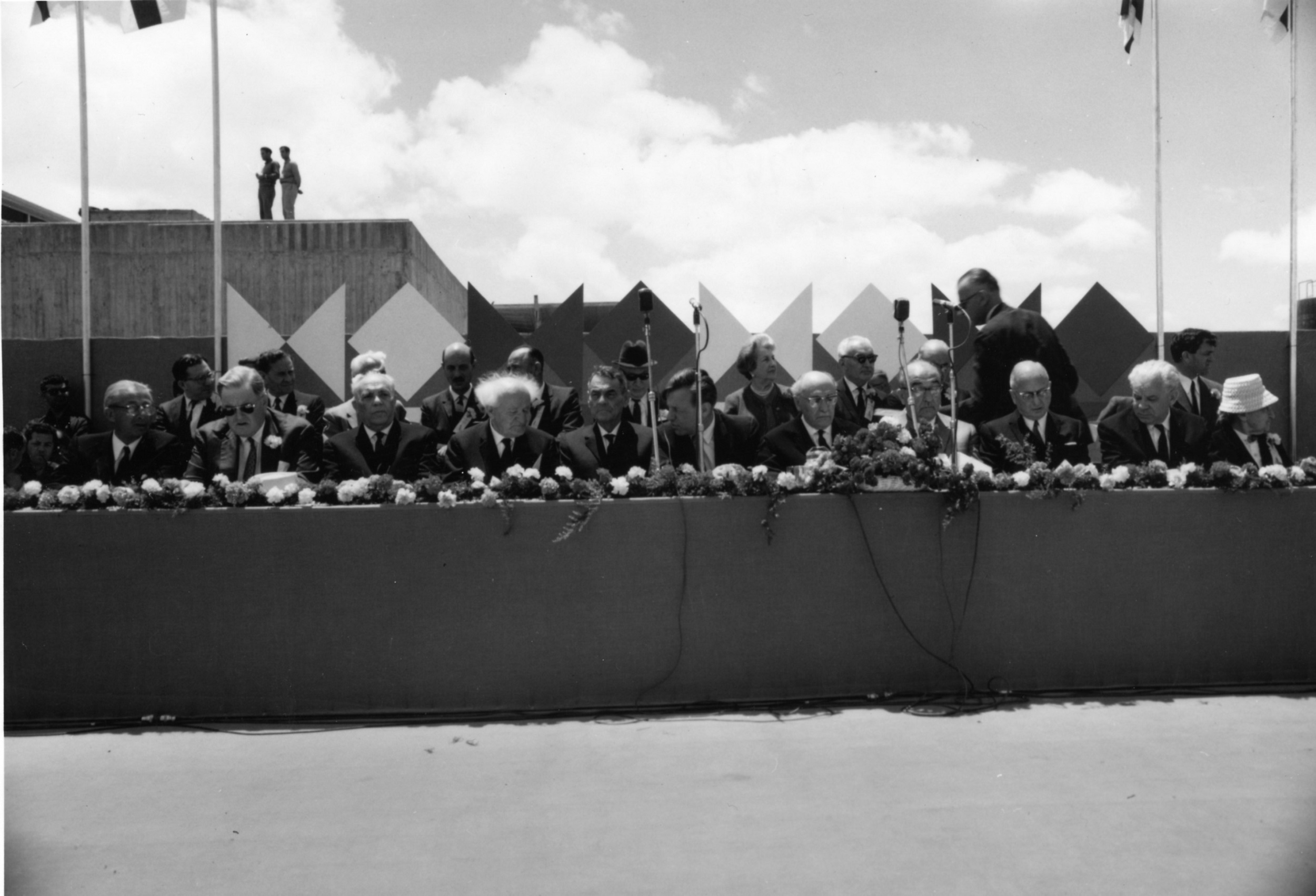
Professor Haim Parnas, an Israeli expert in product design who graduated from the Bezalel Department of Industrial Design, says mementos from the battlefield incorporated into a ceremonial object are one of the assets of Israeli material culture, and as such, have become a sought-after collector’s item over the years.
“Following the founding of the State of Israel, and based on the heroic concept of the Israel Defense Forces, Chanukah lamps were made in military bases from weapon parts and given as souvenirs and parting gifts,” says senior curator Sharon Weiser-Ferguson of the Jack, Joseph and Morton Mandel Wing for Jewish Art and Life at the Israel Museum.
She adds: “Interestingly, the metamorphosis of destructive tools into ceremonial artifacts may actually convey a longing for peace, as can be learned from the biblical passage engraved on one of the lamps: ‘And they shall beat their swords into plowshares, and their spears into pruninghooks: Nation shall not lift up sword against nation, neither shall they learn war any more.’ ” (Isaiah 2:4)
